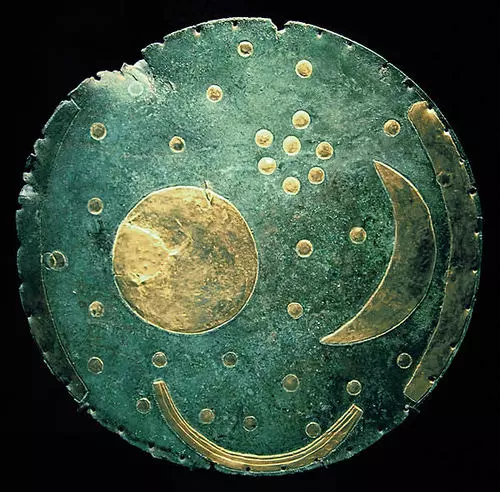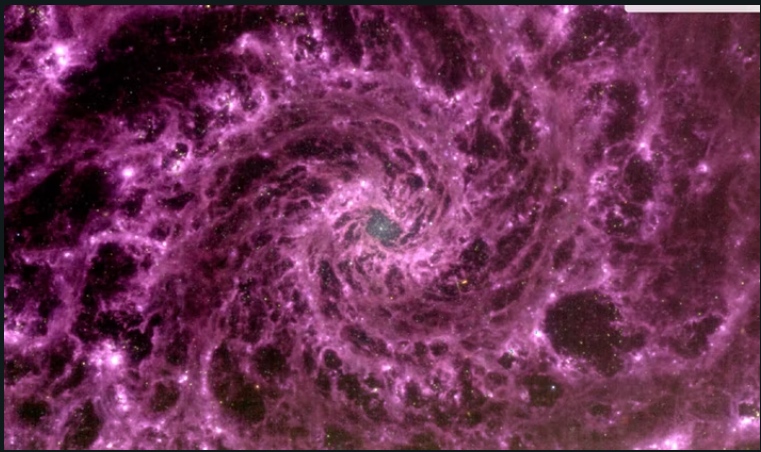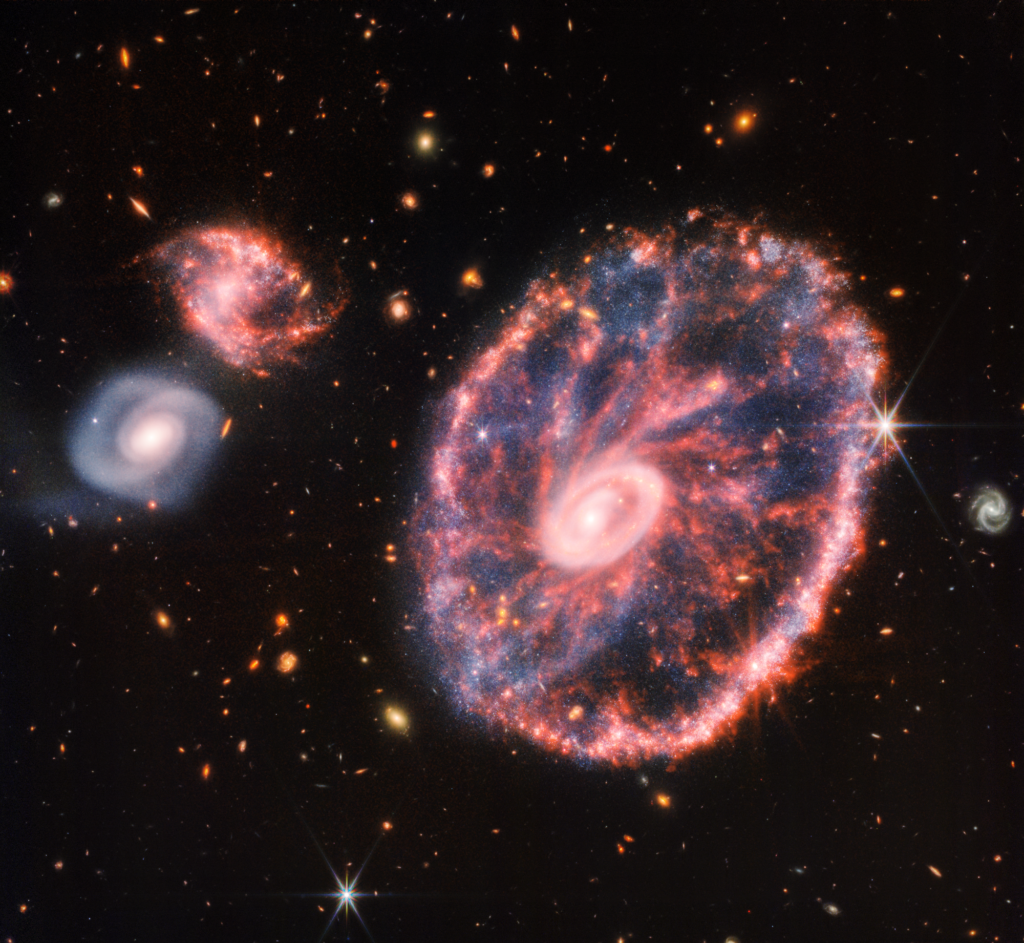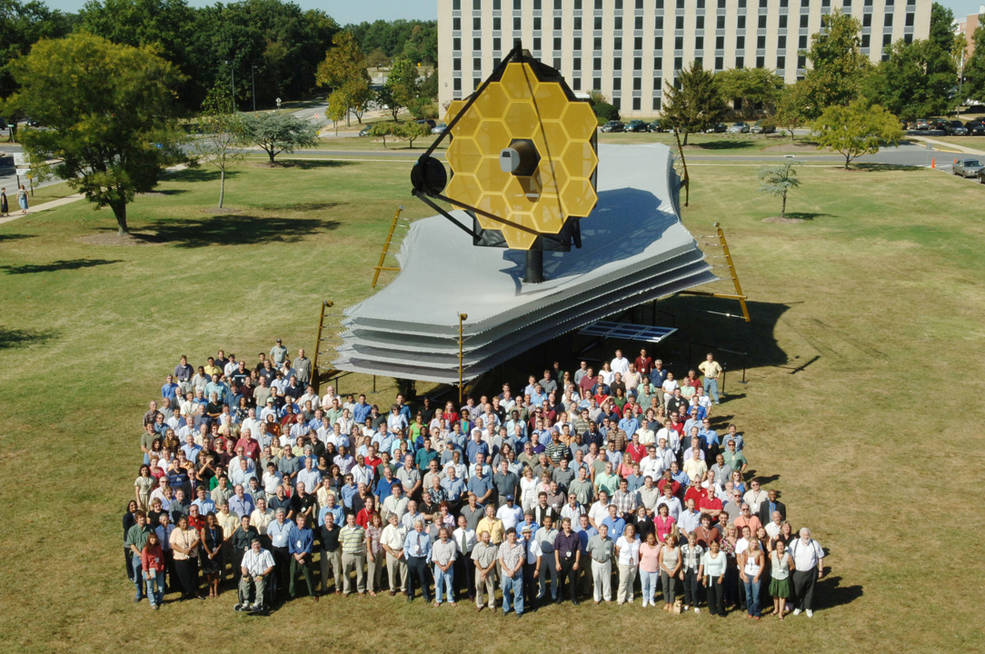
[Nebra Sky Disk – Bronze artifact made by early skywatchers]
With my summer vacation coming up, I am planning some time on the coast doing a lot of nothing besides battling mosquitoes. We have a nice telescope at the cottage, but it can be a challenge to see all but the brightest stars today. I have very fond memories as a kid of a quirky red backyard telescope at my grandparents’ house on the South Coast – looking for planets, moons, and stars all thru the summer. The light pollution was not so bad as it is today, and you could still see the Milky Way and many, many stars on a good night with the naked eye. At summer camp it was stunning to see flickering of aurora over the lake.
It should come then as no surprise that the Christmas launch of the James Webb Space Telescope (JWST) fascinated me. It required an agonizing 6 months of travel and unpacking, but now the newly released photos from it are stunning. I watched it launch live. In its travels, the micrometeor strikes struck me with concern too! The official broadcast of the first released images was marked on my calendar, so I didn’t book you in a meeting for that event.
It’s glorious.

[Messier M74 Spiral Galaxy – links to older image captures]
I think the images themselves are beautiful. I am impressed with the contributions to science even before they opened the mirror, and – yes – professionally curious about the project managers, the project selection, and project planning that goes into something that complex. It has really captured my imagination and attention.
I consider myself to be a life-long learner. Attending educational events or reading about my interests are some of my favorite things, and I really find that I internalize the learning by analyzing other people’s or projects’ experiences – successes and mistakes! It’s really satisfying, and I hope it helps me be a better project manager. So I occasionally document mini-use cases for myself. In the JWST project, I have found several areas of interest to project managers in support of the SPP project methodology to share with you. Sometimes we get questioned about the value of PM tools by SMEs. It’s “red-tape” or too much “overhead.” But I contend that our project structures, planning and methodology give us the tools to have successful projects.


[Same Galaxy – different telescope! Above Hubble true color image in indigo and yellows; Below: JWST in pink and fuchsia]
Here are just three of my observations from the JWST project:
Importance of Project Selection – Quality of estimating project resources, incentives, or disincentives for quality of estimation. This impacts all project resources, money, time, people, or availability of technology to support the goals. Taking the novelty of the project and experience of the team/similarity to other projects/technology is also important.
On estimating proposals: Many pure science-based projects are selected because they have the greatest potential for astounding results – as we’re seeing with JWST. They are not selected as the low-cost vendor or because they can fix your hot-water heater tomorrow. Also, of note: the proposal presenters – like many vendors – are incented to low-ball the schedule and costs in order to get them accepted. While the proposals are selected by scientists and engineers, they still need congressional approval.
Novelty and experience: There has been nothing quite like the JWST before. There were at least 10 new technologies that needed to be developed before this telescope could fly. Imagine a database migration project where you have to develop a programming language and solder all new boards for the new servers by hand using waldos.
The JWST was not selected because the selection committee thought it could work, or that it was the least expensive telescope options – they selected it because they thought it would provide insight into the universe and revelations for the scientific community to study for the next generation.

Importance of the Success Metrics – The project plan can often be weak around success metrics. The basics are “on time, within budget, in scope.” Unlike many (all, or most) corporate business KPIs for a project, NASA doesn’t consider on-time delivery or the budget figures, or even technically the scope of work in the evaluation of a successful project. Although many news articles include the delays and budget overruns in them, it must rankle a little because NASA considers this project a huge success. The telescope launched successfully, arrived a million miles away at L2, deployed the sun shield and mirrors, and is capturing amazing data and sending it back to analyze. Altho years late and billions over budget,
it met the quality and deliverables requirements. Budget and timeline only mattered to Congress. (And polls show Americans think it was money well spent after just two weeks.) The adages of making sure to have metrics that matter, “You can’t manage what you don’t measure” and, “What’s measured improves” are a bit turned upside down in this project – but it holds up if you also add, “Metrics are like a course in a meal. They should satisfy the need or want for something.”

[JWST project team at Goddard Space Lab]
Importance of Risk Assessment – The JWST project has a reported over 700 individual single points of failure. Like if one single pin holding the cover for the shield didn’t release – the shield couldn’t deploy. Project over. Ten billion dollars. Just. Lost. In. Space.
Before launch, the engineering team brainstormed ways they could tweak design, add a back-up widget, jiggle a handle, or use things like temperature differentials to jog something loose to reduce the risks of that single mis-fired pin.
Work on an exhaustive Risk Plan can often feel like digging up trouble and wasted effort to project teams – you could plan for many things that are not likely to happen that you also feverishly hope NEVER gets used. For an earth-bound project, you could evaluate the level and costs of a realized risk to the project – but you have the benefit of being able to see, touch, or evaluate the issue when it’s realized. I do not think you have to go to the minute detail like JWST unless the constraints of the project require it.
However, these two small things were a light bulb for me, and I will endeavor to bring the risk planning to a higher level of awareness to project teams in the future, recognizing that we hope to never use it, but we’re prepared for it to happen.
For now, I’ll leave you with just those three of my eureka moments. There are so many more I am finding after reading and learning about the JWST project. Would love to hear your comments and talk with you about them.
So to summarize, this abbreviated case analysis of the JWST project re-affirms my confidence and trust that the basic “rules” of project management and our PMO methodology are a solid foundation even for the largest, strangest, most innovative projects that we do: pick the right strategic projects for your organization, understand the real success metrics for the project, and do appropriate risk planning in advance as a hedge against – not just against failure – but to combat the unknown situations which cause stress, re-work and extra time.
Earn a PDU: IIL keynote speech from Greg Robinson lead PM on the JWST project (I’m not aware of any family relationship.)
More images and information can be found here

The pictures are amazing! (Sorry to say, I did not pay any attention to the JWST before.) Your entire blog was very interesting.